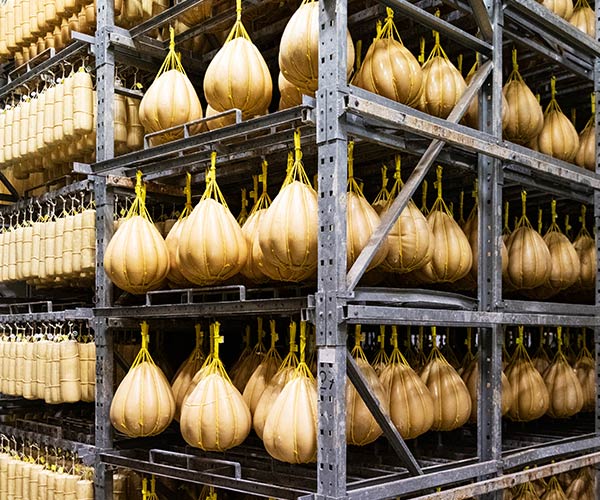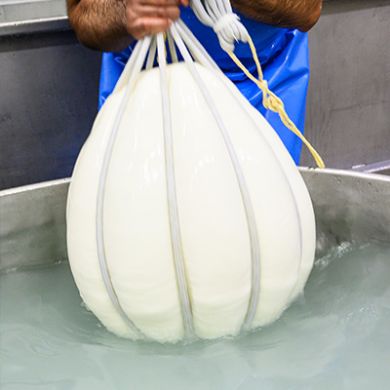Processing of Provolone Valpadana P.D.O.
Home » Processing of Provolone Valpadana P.D.O.
The processing steps of Provolone Valpadana P.D.O., between tradition and technology
Production technique
The processing technology of the milk intended for the production of Provolone Valpadana P.D.O. is the classic “spun-paste” processing, based on physical, chemical and bacteriological criteria and consisting of a few essential steps:
The processing phases
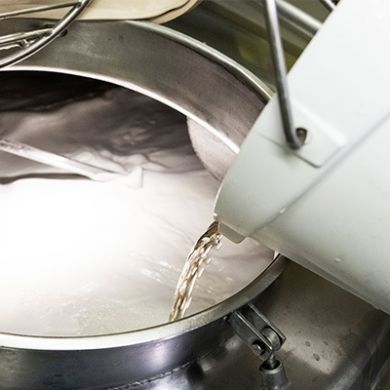
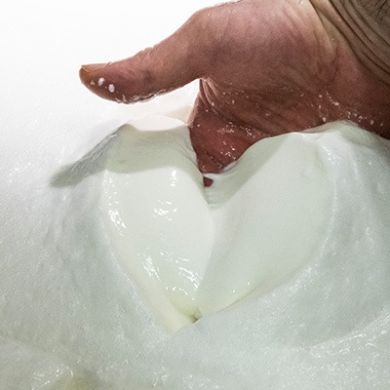
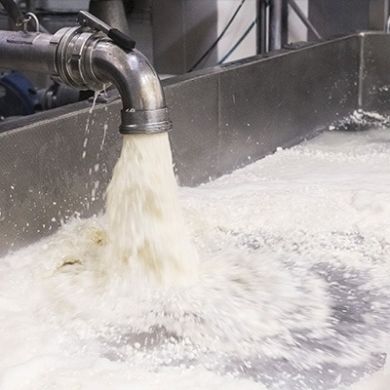
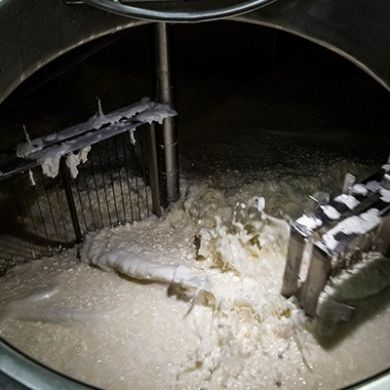
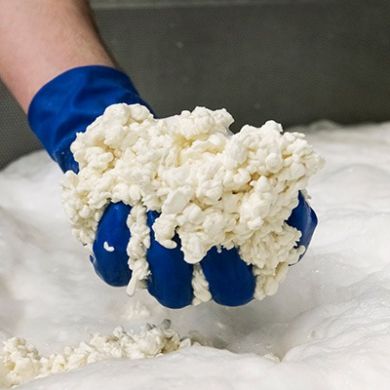
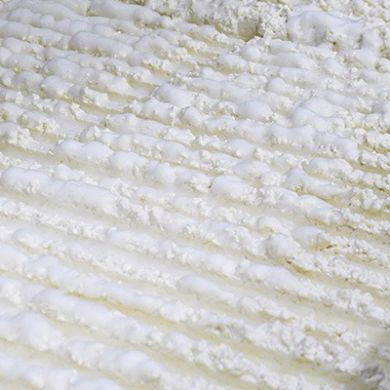
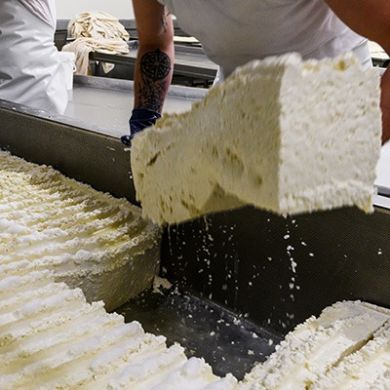
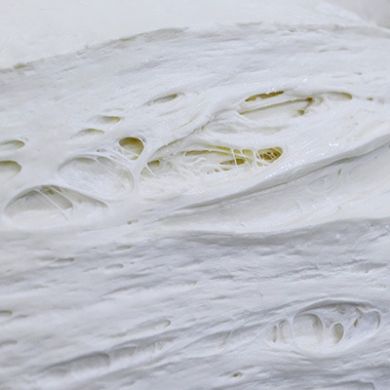
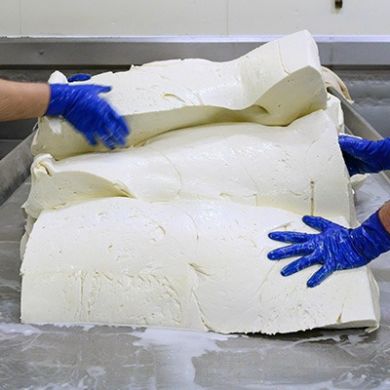
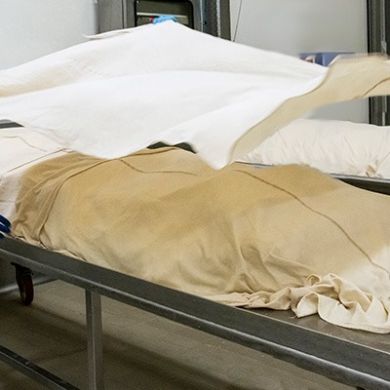
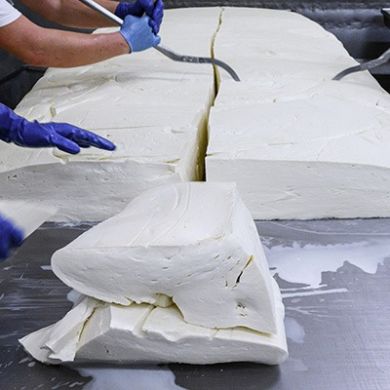
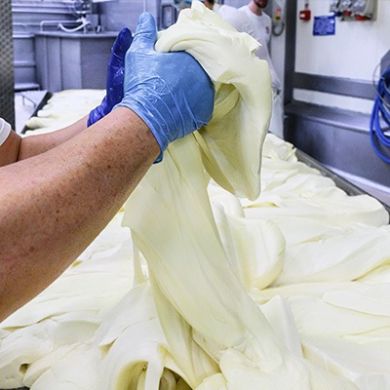
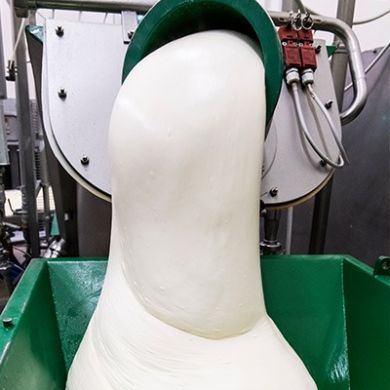
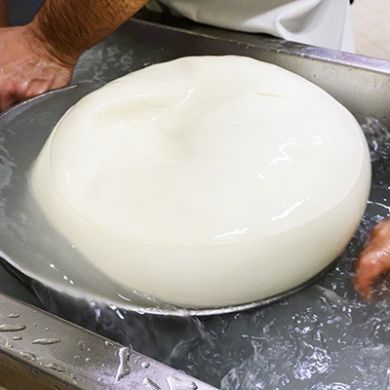
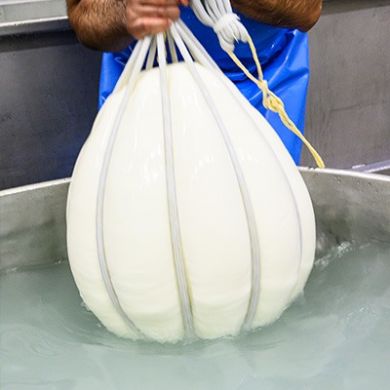
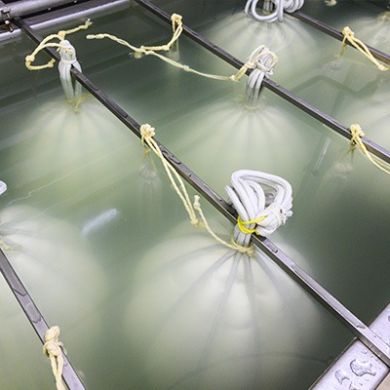
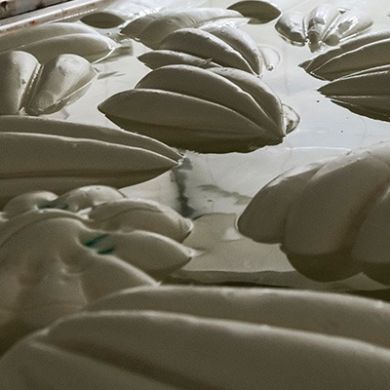
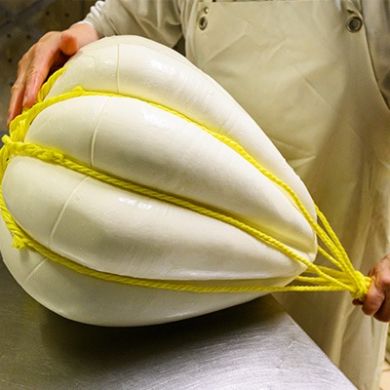
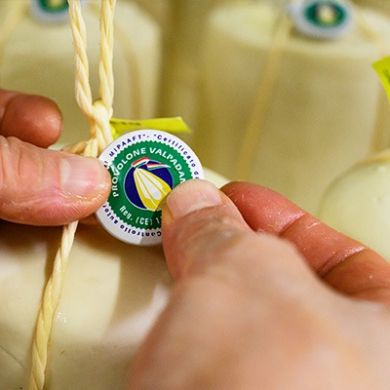
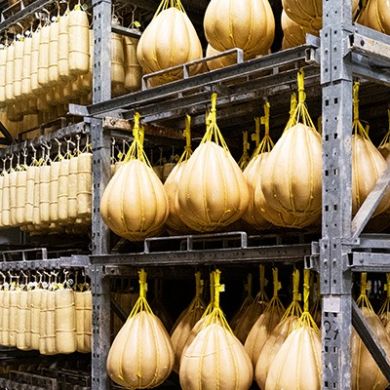
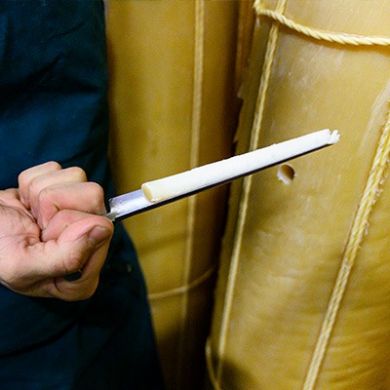
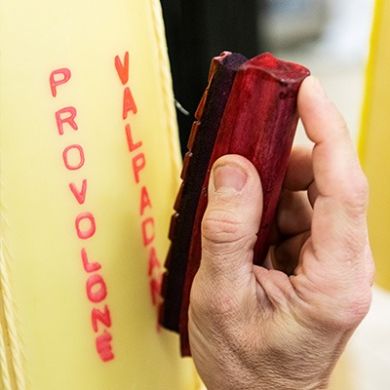
1
Preparation of the milk in the boiler
Whole cow’s milk, with natural acidity and selected in accordance with the provisions of the production specifications, in terms of geographical origin and feed of the dairy cows, collected within 60 hours after the first milking, can be heat-treated up to the pasteurization temperature if it is intended for the production of Mild and Strong Provolone Valpadana P.D.O. type up to a weight of 6 kg while, for the Strong type weighing over 6 kg, the milk can be, at most, thermized (heated at temperatures of around 63-65 °C for 15 seconds).
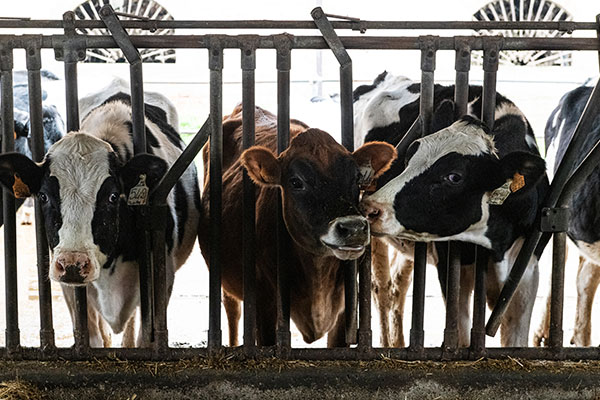
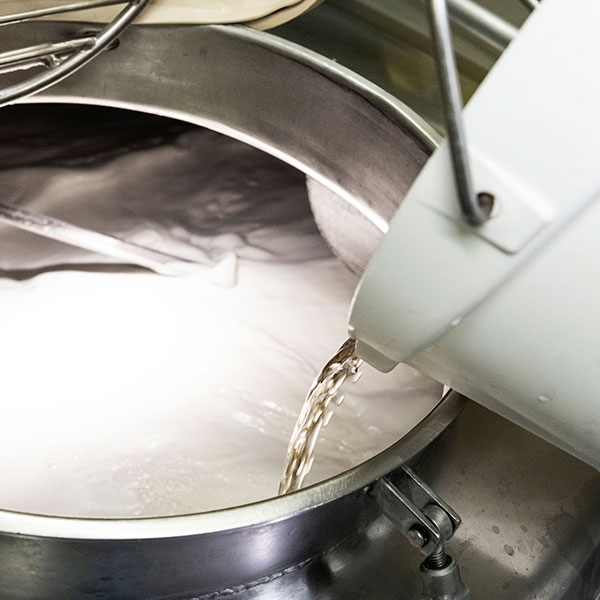
2
Addition of milk enzymes and rennet
The milk enzyme culture used in the processing consists of natural whey starter, in other words the microbial culture naturally selected in that specific dairy in the residual whey from the previous day’s cheesemaking. Clearly, the whey starter is one of the cornerstones of the dairy transformation of Provolone Valpadana P.D.O. since it will be the appropriate bacterial charge to create the conditions so that the ensuing phases can take place in an optimal way.
Before we talk about milk coagulation, it is important to say a few words about rennet and its types, which characterize the cheese. Rennet is a complex set of enzymes that changes the milk casein, causing the milk to coagulate. Different types of rennet are used in the dairy industry, but for the production of Provolone Valpadana P.D.O. cheese only two types have been authorised:
- calf rennet in liquid formulation (extracted from the calf’s abomasum), containing basically two enzymes (chymosin and pepsin);
- the rennet of lamb and/or kid in paste formulation (abomasa of lamb and/or kid, ground and kneaded with salt) containing different enzymes such as chymosin, pepsin, lipase and zymase complex (entire enzymatic kit) of the fourth stomach of ovine and caprine animals, still known only in part to this day.
3
Coagulation
Conceptually, the coagulation of milk (in the production of Provolone Valpadana P.D.O. this takes place around a temperature of 36-39 °C), is the change in the physical state of the milk (from liquid to gel), obtained thanks to the action of the rennet on the casein distributed in the milk.
Practically, the casein micelles, instead of “floating” in the milk, after the action of the rennet join together to form a three-dimensional lattice structure that incorporates the fat, part of the whey and milk enzymes, thus forming a gelatin (dicalcium paracaseinate) commonly called curd.
Ultimately, the liquid calf rennet will turn into a curd suitable for the production of Mild Provolone Valpadana P.D.O., while the lamb and/or kid rennet will turn into a curd suitable for the production of Strong Provolone Valpadana P.D.O., as the lipases, together with the complex enzymatic system present, will promote the onset of those complex aromas that, together with the trigeminal sensations, characterize the uniqueness and preciousness of this cheese.
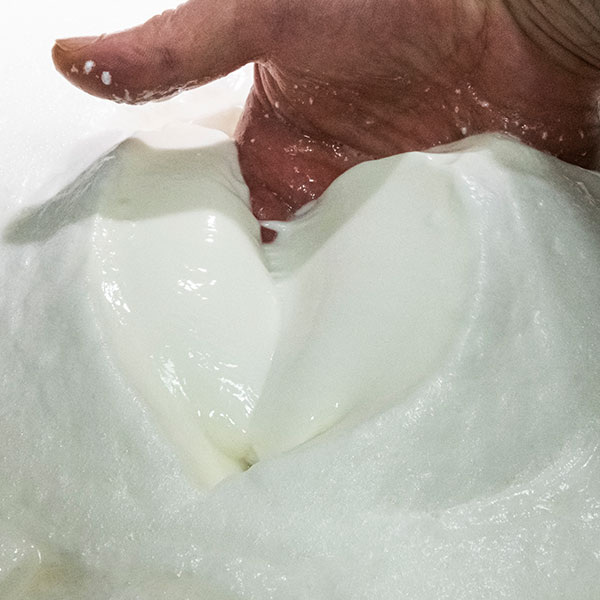
4
Fermentation and cutting of the paste
After processing the milk in the boiler, the curd is left to rest on suitable surfaces, so that it can properly ferment and acidify to the right point and the ideal conditions for spinning the paste are created. This fermentation is nothing else than the continuation of the process started with the addition of the whey starter to the milk and, therefore, the proper microbial development during the processing and maturation phases of the paste. Today, this phase is monitored with special equipment. In the past, in order to see if the paste was ready to be spun, cheesemakers proceeded by trial and error, dipping a piece of paste in boiling water to see if it stretched properly, otherwise, they waited a while and then tried again. This practice is what originated the name of “prova” (test), “provatura” (testing), provola and, finally, provolone. Once the right point of maturation is reached, the paste is cut and cooled to stop fermentation and then spun.
5
Spinning
This technological practice takes its name from the spinning of wool, in the sense that the cheese paste is mature when it is heated and, by pulling it, it stretches to form extremely long threads.
Suffice it to think that only 10 grams of paste can be stretched, if so desired, up to a length of one meter.
The spinning takes place in water at high temperature and, for centuries (in incognito), it carried out the function of pasteurization ante litteram, before the founder of modern microbiology, Prof. Louis Pasteur (1822-1895), made his discoveries.
In practice, the structure of the paste changes from grainy and discontinuous to fibrous, continuous and pliant. Currently, the spinning process can be carried out by hand or, more commonly, by using continuous spinning machines capable of ensuring a process that complies with the loyal and constant practices handed down by tradition.
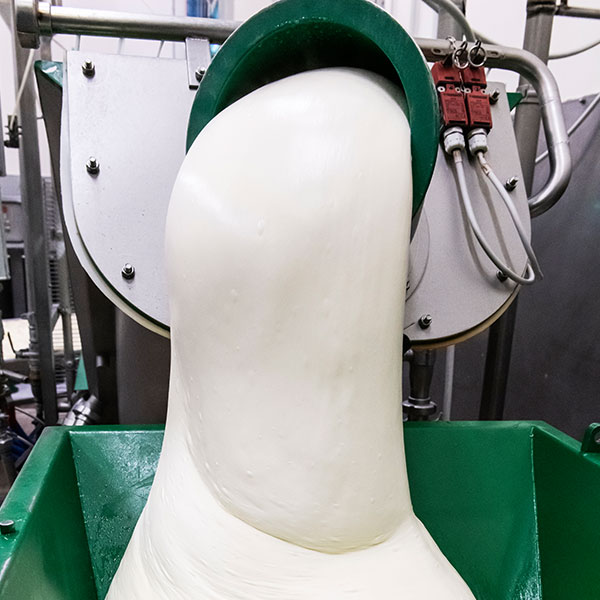
7
Salting
Once the cooling and firming phases are completed, the cheese forms are salted in brine; this stage may last from a few hours up to thirty days, depending on the shape and weight of the forms.
During the salting, an osmosis process takes place (exchange between miscible liquids) which favours the entry of salt and the exit of the whey. After the salting is finished, the cheese forms are dried and prepared to be stored in the maturing warehouses.
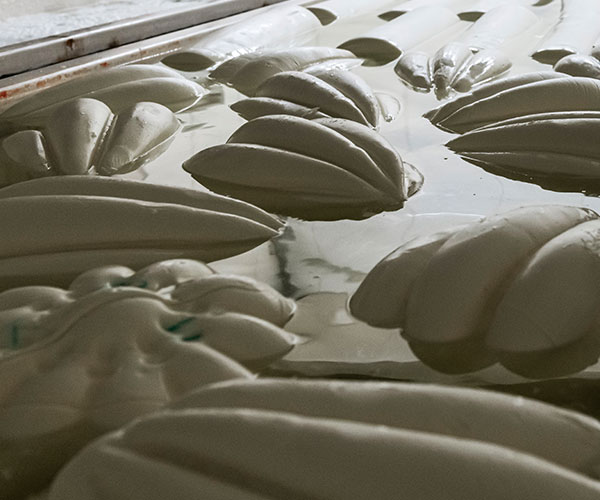
8
Ligature
The preparation phase for the seasoning involves the tying with ropes suitable for contact with food, according to a technique that is as traditional as it is practical and efficient. The type of tying with “mother ropes” represents the cheesemaker’s extra touch. In fact, it is always in relation to the shape and weight that the grooves of the support ropes are foreseen.
The forms, properly tied and possibly smoked, are treated on the surface according to the provisions of current legislation, in order to preserve them from mould and mite attacks. Before being stored in the warehouse for the required maturation period, the cockade, the mark that identifies only P.D.O. cheese, is affixed. At the end of the maturation period, the cheese forms are labelled, coated with paraffin wax and then sent for distribution.
9
Seasoning
In the warehouses, thanks to the physical, chemical and microbiological seasoning processes, the cheese forms are left wrapped in their fascinating complexity, only remembering that it is precisely the seasoning that releases all the natural sensory potential of the Provolone Valpadana P.D.O.
In conclusion, a technology as simple in its concepts as it is complex in terms of the effects on the finished product, which fully reflect the values of the tradition and the art of cheesemaking, together with the typicality of the product obtained.
The guarantee of traceability of each form of Provolone Valpadana P.D.O. is obtained through the affixing of a unique company code, numerical and/or alphanumeric, for proper identification of the cheese forms until their consumption.
